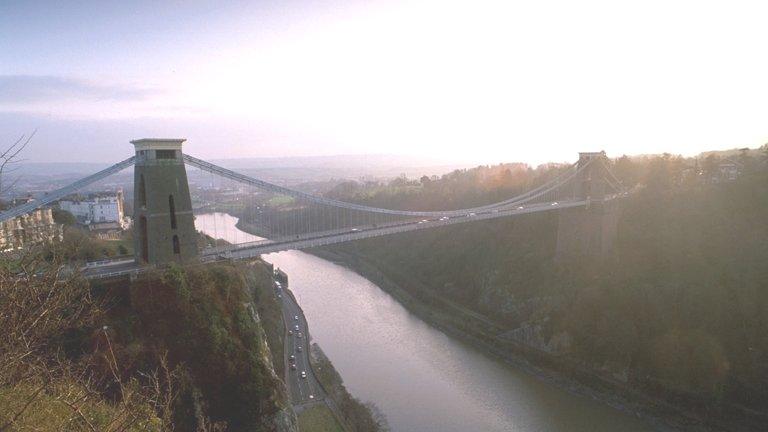Clifton Suspension Bridge: Brunel's bridge marks 150 years
- Published
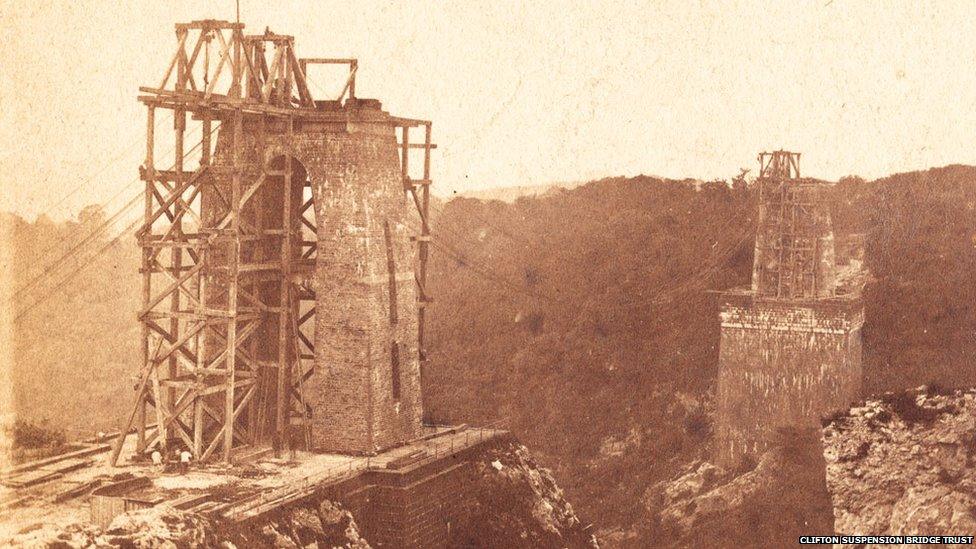
The Clifton Suspension Bridge - built 150 years ago - looms over Bristol - a symbol of the city and its creator Isambard Kingdom Brunel. Yet the great Victorian engineer's masterpiece was originally meant to look quite different.
Brunel had a profound impact on the West of England - and nowhere is this seen more than in Bristol.
Not only does his Great Western Railway extend here from London but the ss Great Britain he designed sits in the harbour - a harbour which Brunel himself had a hand in helping expand.
Perched high above the Avon Gorge sits his crowning glory - The Clifton Suspension Bridge.
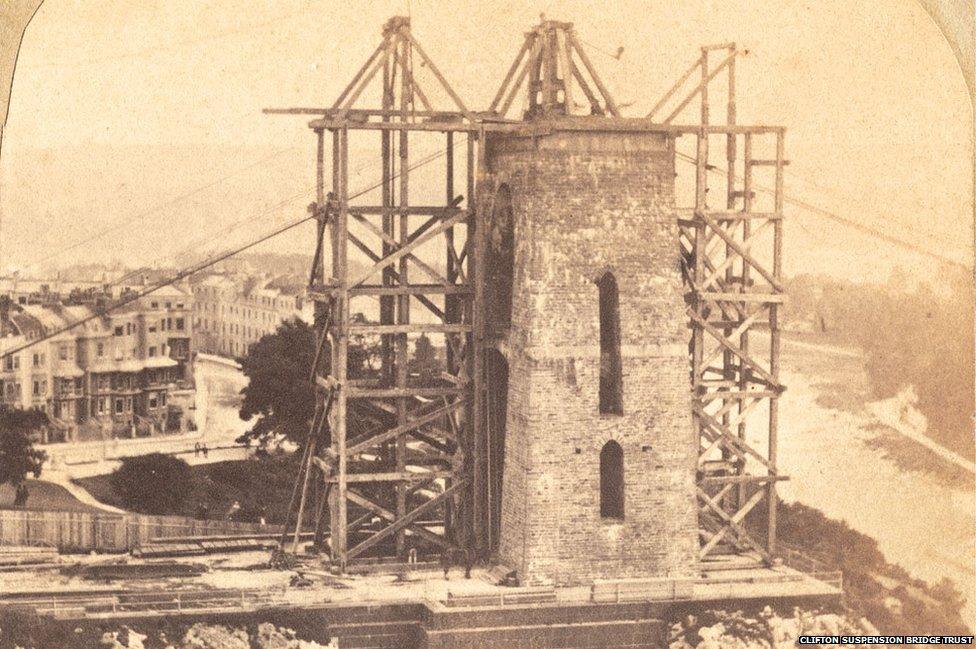
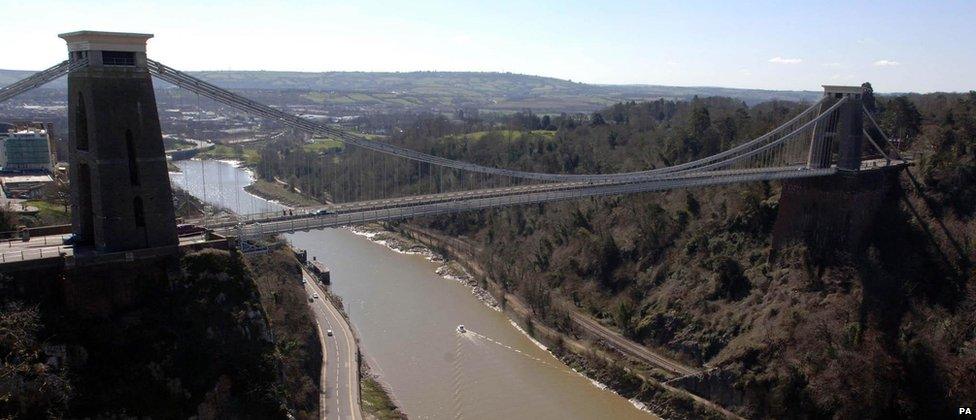
Brunel was aged just 24 - and already regarded as a great engineer - when his design for the bridge won a public competition.
His original design had included sphinxes on the bridge's towers, but a lack of money forced Brunel to tone this down, resulting in the plainer towers we see today.
"The original plans were for both towers to have an Egyptian style, which you can still see today in the shapes and the curve at the top," said Laura Hilton from Clifton Suspension Bridge.
"They were going to be decorated with iron panels showing the story of the bridge being built, and each one would have had two sphinxes sitting on top.
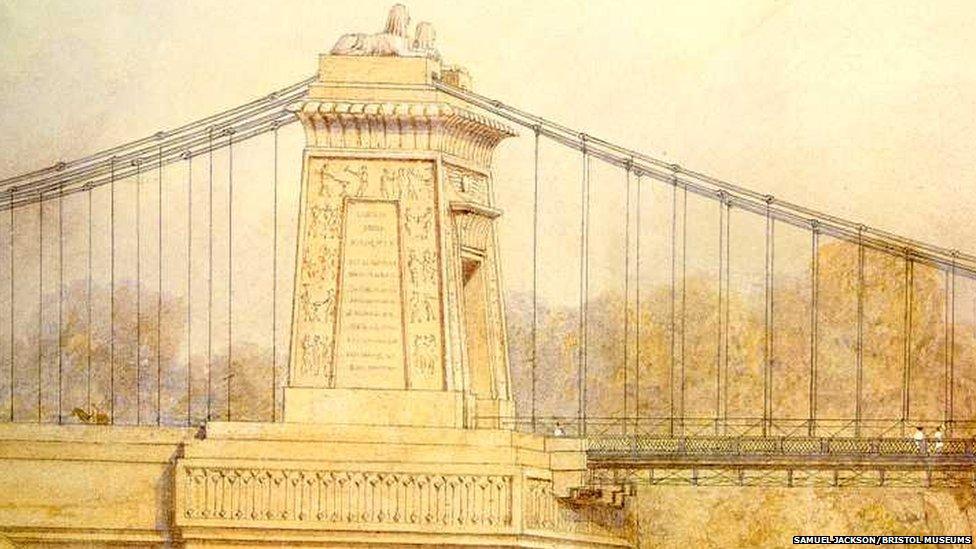
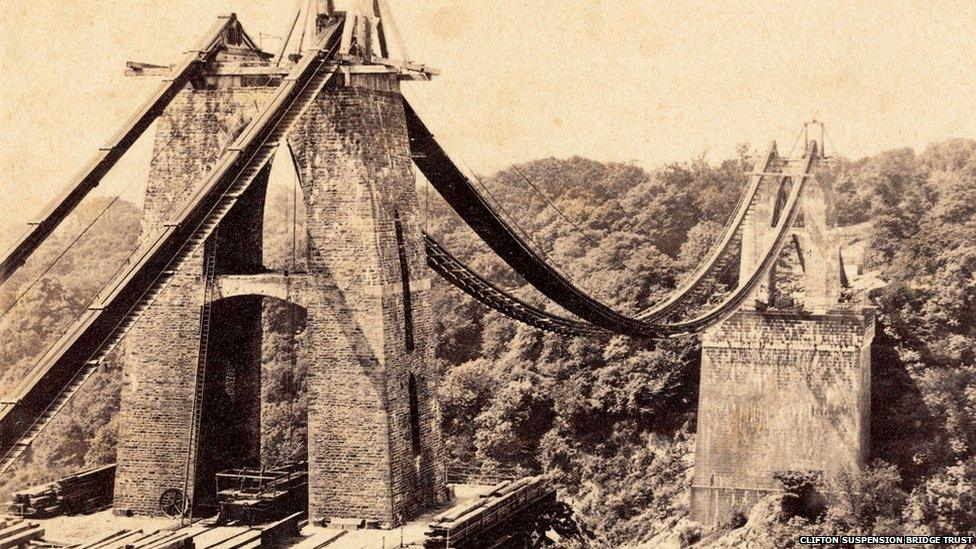
"When they started building they realised it was never going to be possible to put the decoration on, and Brunel redesigned the bridge in a plain format."
While building a bridge across the gorge had been a dream for centuries, it was only the advent of the industrial revolution that made it possible.
"It was first conceived in the 1700s by a wine merchant called William Vick who left £1,000 in his will to build a stone bridge across the gorge," said Ms Hilton.
"At the time the technology meant it wasn't possible, but he was forward thinking. He left the money in trust to grow until it was £10,000.
"The technology did catch up - the answer, ultimately, was to build an iron suspension bridge."
Two competitions were held by the bridge committee to find a winning design and the contract was eventually awarded to Brunel.
Construction began in 1831 but it suffered several setbacks and was not completed until 1864. Brunel died in 1859 and it was finally finished as a memorial to him.


It took 33 years to build the bridge
99% of the iron work is still original
Each of the stone towers weighs about 4,000 tonnes
There are 4,200 chain links and 162 iron suspension rods in the bridge
Brunel was 24-years-old when he designed it
He was paid 2,000 guineas (£2,100) when he was appointed to the project
In 1864, when it was tested, about 500 tonnes of rubble was spread across the deck to test its strength. It dropped by just 7in (18cm).

"A lot of the early records were lost because it took so long to build, so we know very little about the men who were employed to build it," says Ms Hilton.
"We only know of two recorded deaths which happened in the later stages of construction."
About 99% of the iron work is still original and the bridge is expected to survive for many years ahead.
"It is extremely good quality and it was cast to be long lasting," said Ms Hilton. "As long as it's maintained there's no reason why it shouldn't last for another 150 years."
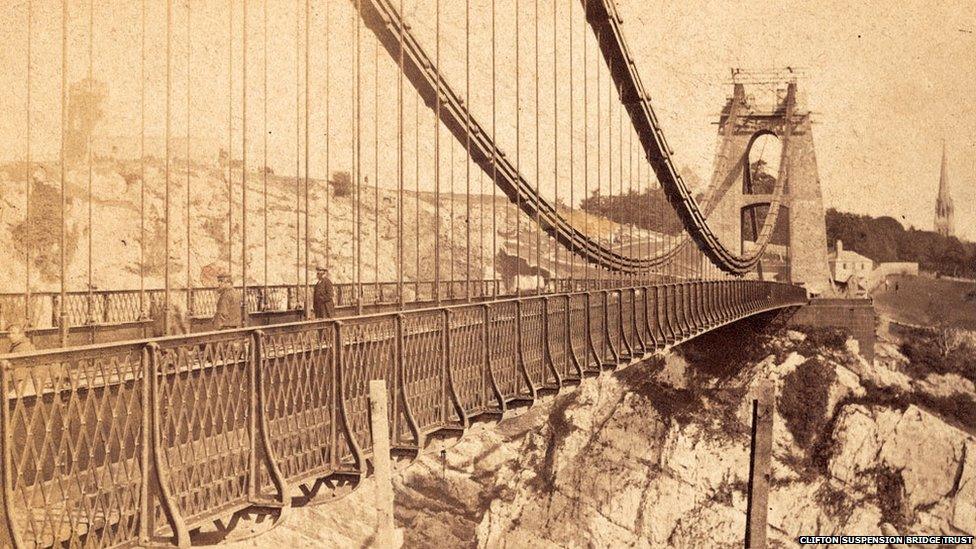
- Published15 August 2014
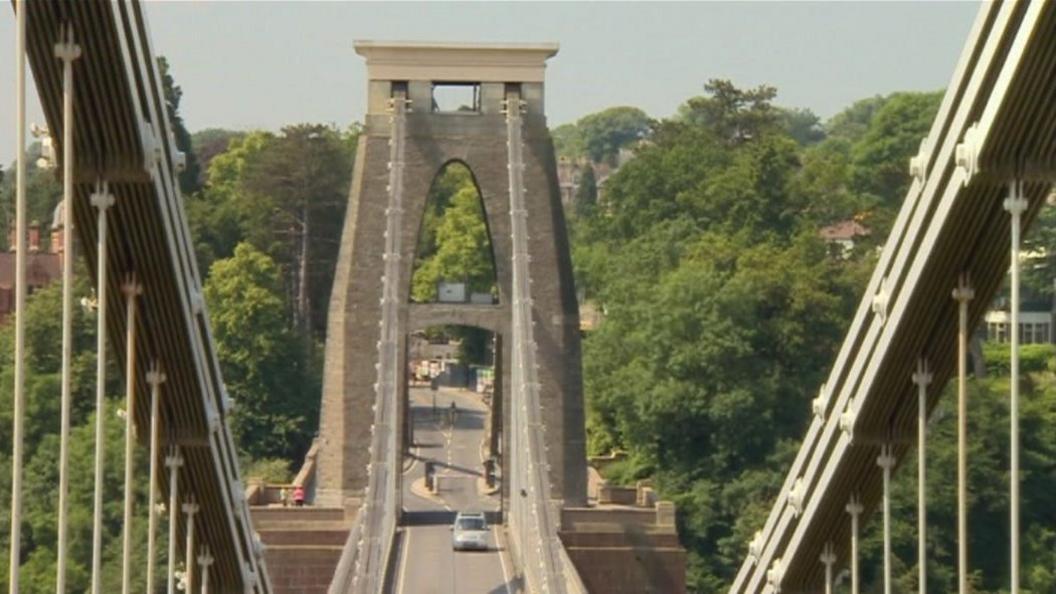
- Published6 January 2014
